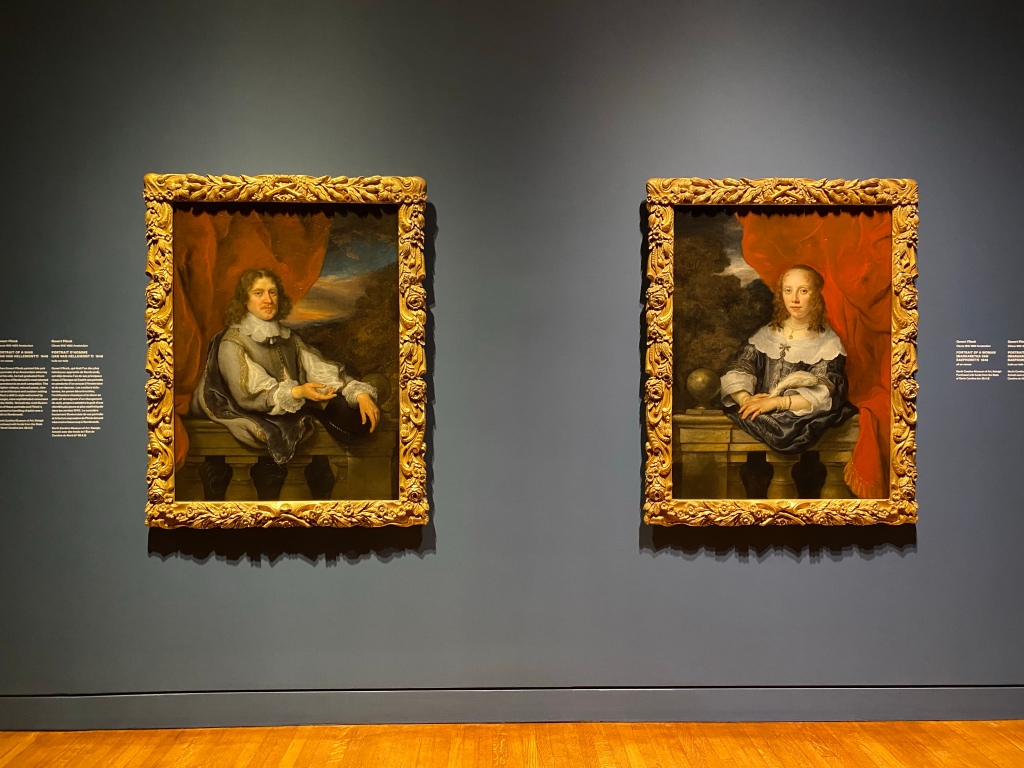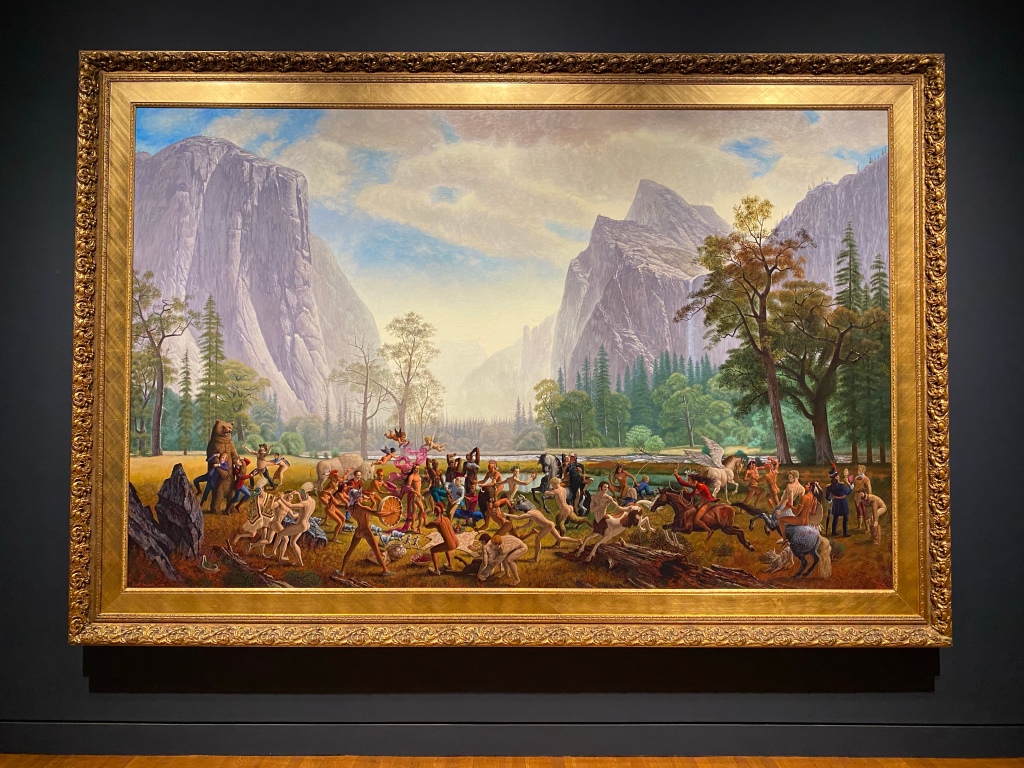The National Gallery of Canada has reopened after the most recent pandemic lockdown with a new exhibition of Rembrandt and a lofty new vision for its future that aims to connect to more diverse voices and audiences through critical conversations in art. In this vain they have taken what was slated to be a pretty standard Rembrandt exhibition and infused it with Black and Indigenous voices and artists that broaden the scope of the exhibition to reflect on the time period that Rembrandt lived in and how it connects to colonization and the Trans-Atlantic slave trade. The exhibition runs until September 6th so there are still a few more weeks to see it!

I’ll start by saying in this review that Rembrandt it not my favourite artist, he’s not even my favourite artist of the 17th century so when the exhibition was first announced I honestly had very little interest in seeing it. Is Rembrandt a fantastic painter and important artist? Yes, he is but personally I don’t find him that interesting. Objectively was this the best exhibition of Rembrandt? No, it wasn’t. The exhibition mainly traces the transformative period during Rembrandt’s lifetime in the Amsterdam art market and how it shaped his career and that of his contemporaries. At some point during the development of the exhibition, I suspect in the latter part of its development, the choice was made to connect Rembrandt’s story to Turtle Island (a.k.a North America) through the addition of research and text by curators Gerald McMaster, Rick Hill and Joana Joachim, as well as contemporary artworks by Black and Indigenous artists. The three “guest curators” examine the impact of Dutch colonization on Black and Indigenous peoples. With the addition of Black and Indigenous voices I feel like this exhibition was transformed from a pretty standard historical exhibition to one that is actually really exciting and interesting. I think it also marks an exciting new path for the National Gallery of Canada under the direction of its new Director and CEO Sasha Suda.
I think it would have been easy for the NGC to have mounted this exhibition without the additional context introduced by the three curators and it would have been a perfectly fine exhibition. Unlike the Gauguin exhibition from 2019 that needed a more critical lens because of the blatant issues of colonialism, race and gender with the artist and his work, I suspect this Rembrandt exhibition could have gone on with few questioning it. So I applauded the NGC for taking a step further and learning after their Gauguin missteps. (For context, the NGC had to add new texts to the exhibition after criticism that it ignored the issues of colonialism, race and gender.)


Now I don’t want to ignore the work done by the exhibition’s curator Stephanie Dickey. How the exhibit traces Rembrandt’s career through the transformative period in Amsterdam is very interesting. I just believe that in 2021 it is getting harder and harder to simply celebrate white male historical artists who have always had the spotlight and recognition. After the last year plus with a global pandemic that exposed even more societal inequalities, brought forth a global social justice reckoning with Black Lives Matter and with the discovery of thousands of graves of Indigenous children at the sites of former Residential Schools across Canada how can we not take a more critical look at every single exhibition. I’m not saying we should stop having exhibition of Rembrandt, Monet, Picasso or Andy Warhol. But I think when we do we should always hold up an interdisciplinary critical lens to see how it can be pushed forward. Also if we’re going to continue to have these historical exhibitions of celebrated white male artists, institutions should be providing equal space to lesser represented artists, including female artists from diverse background. And I’m not just talking about one off artwork installations like the NGC currently has in their rotunda, main entrance and exterior spaces, but also have large scale retrospective exhibitions as well. Other than large group exhibitions like Àbadakone which feature female artists, I can only remember seeing one exhibit devoted to a female artists in the NGC’s main special exhibition gallery in the last 10 years, Elisabeth Louise Vigée Le Brun in 2016.
To get back to the Rembrandt exhibition a bit, overall I did enjoy the exhibition. I really liked how well intertwined the Black and Indigenous voices were in the exhibit. I’ve seen exhibition where they have a few contemporary artworks at the end of the exhibition in an attempt to add some critical viewpoint but it can come off as an after thought and disconnected. The Montreal Museum of Fine Arts had an exhibition of “orientalist” European art in 2015 and in the final gallery they had contemporary artworks by female Moroccan artists that felt so excluded from the rest of the exhibition. But with Rembrandt before you even walk into the first gallery you are greeted by an installation by Mohawk artist Skawennati of a futuristic longhouse. The first text you read inside immediately tells you that this isn’t just a Rembrandt exhibit but also one that looks at the impact of colonialism even though Rembrandt had no direct connection to Indigenous peoples. However, the Dutch Golden Age in which Rembrandt lived was wrapped up in the colonial project.

Alongside a classic image of a Dutch windmill we have text by Gerald McMaster discussing how while the Dutch sought to control nature, on the Prairies, Indigenous peoples honour the wind and see the effects of nature as a spiritual force. Texts like this continually connect the exhibition filled with gilded portraits to the lives of Black and Indigenous peoples. In total there are ten contemporary artworks throughout the exhibition as well as many texts by the three “guest curators” that include wall texts in every room introducing ideas that challenge the viewers, as well as texts to accompany artworks, including the Dutch artworks. My only criticism with the contemporary artworks chosen is that some of them, the Skawennati and Ruth Cuthand artworks were just in the NGC’s big Àbadakone exhibition. So it just gives me even more of a feeling that the decision to included Black and Indigenous voices was a bit of a last minute decision. It would have been interesting to see contemporary artworks that directly respond to the exhibition.
I think there were plenty of opportunities to include more artworks by Black and Indigenous artists to add more depth and contrast. All the text is fantastic but it can feel like a very text heavy exhibition at times. One of the only artworks that seems to have a direct connection to the other artworks in that room that it’s in is the large Kent Monkman landscape that contrasts with a Dutch landscape and some religious themed artworks. In the rooms filled with portraits of finely dressed men and women it would have been interesting to see some contemporary works, possibly some portraits, especially with the text by Gerald McMaster and Joana Joachim discussing women. As I said, I think the texts do a fantastic job of presenting ideas to challenge the viewer and give them new ideas to think about, but I think many viewers would be able to connect better with more visual representations.


My criticisms are directed mostly at the Nation Gallery of Canada as an institution than the exhibition itself and the curators. I think they did a fantastic job of taking a pretty standard historical European art exhibition and turning it into something new. And I really glad that NGC allowed the curators this opportunity and pushed themselves with this. This exhibition was a joint project between the NGC and the Städel Museum in Frankfurt and I’m assuming the contemporary artworks and texts by the three “guest curators” will not be travelling to Germany for it’s showing there. This fact probably did limit how much could be changed in the Ottawa exhibition. But in the future I hope exhibitions like this get that touch from their inception instead of when they are almost complete. The changes happening are important and necessary and I’m looking forward to seeing how the institution changes in the next several years.



On another note, I absolutely love the two artworks in the exhibition by Sobey Awards winning, Congolese artist Moridja Kitenge Banza. His use of the spoons as a metaphor for commodities and the Black body is really powerful and beautiful. I would love to see more of his work at the Nation Gallery of Canada in the future. Even if you’re not really a fan of Rembrandt like myself try to make the time to see this exhibition before it ends in a few weeks, if only to see these amazing works.

